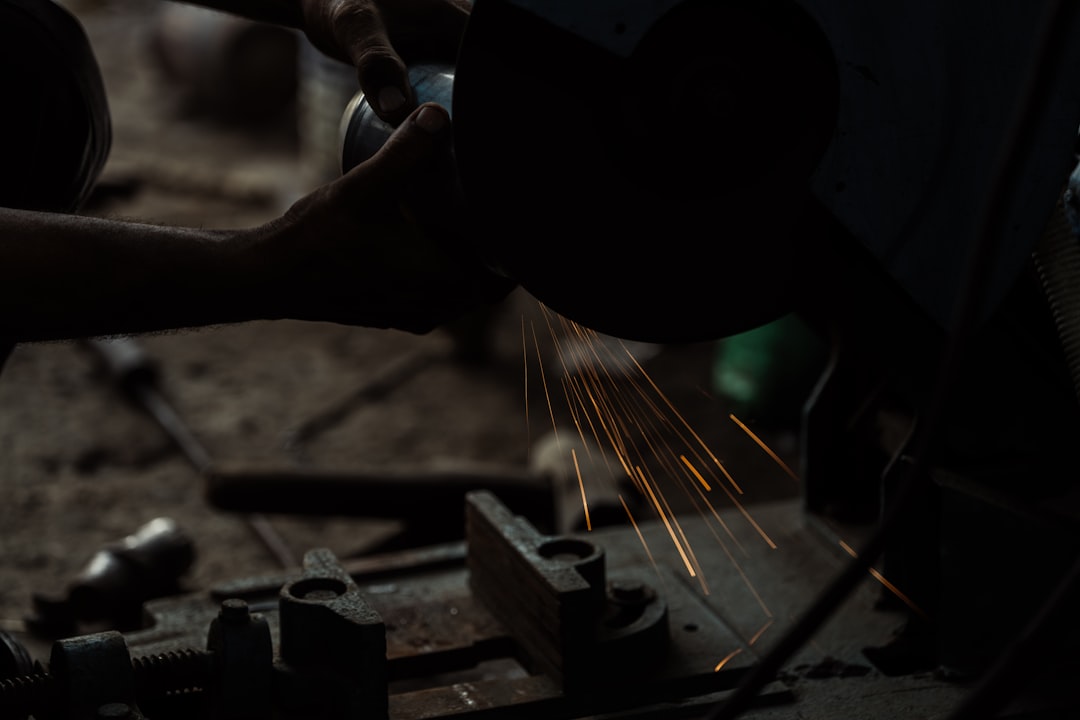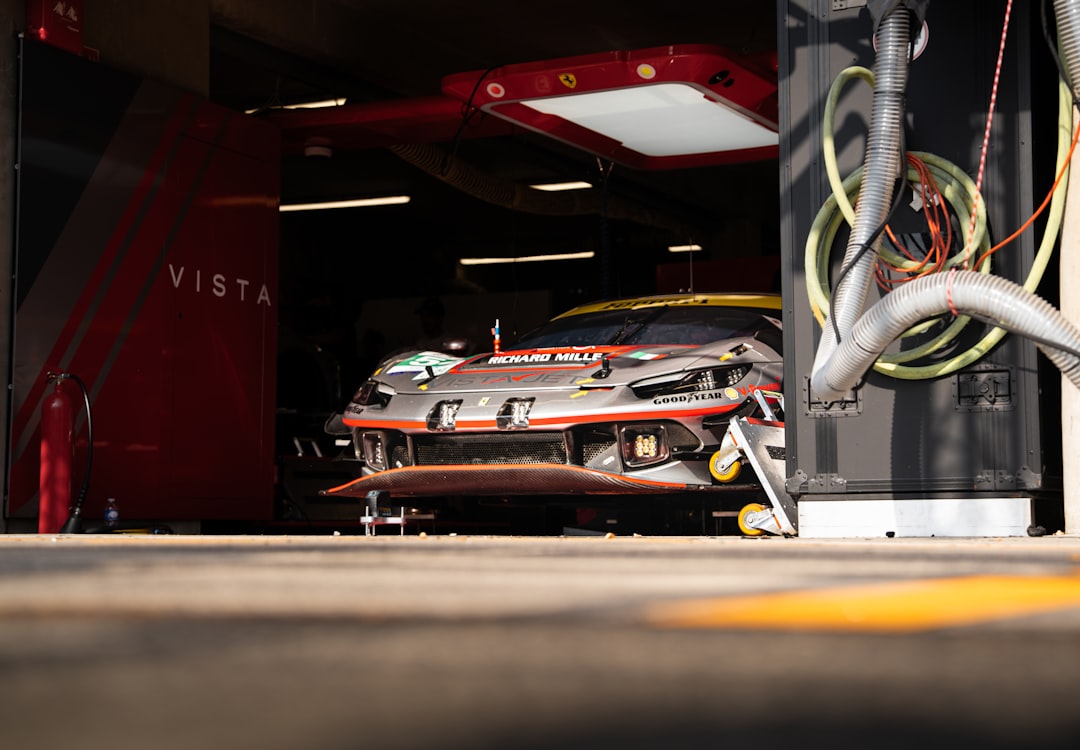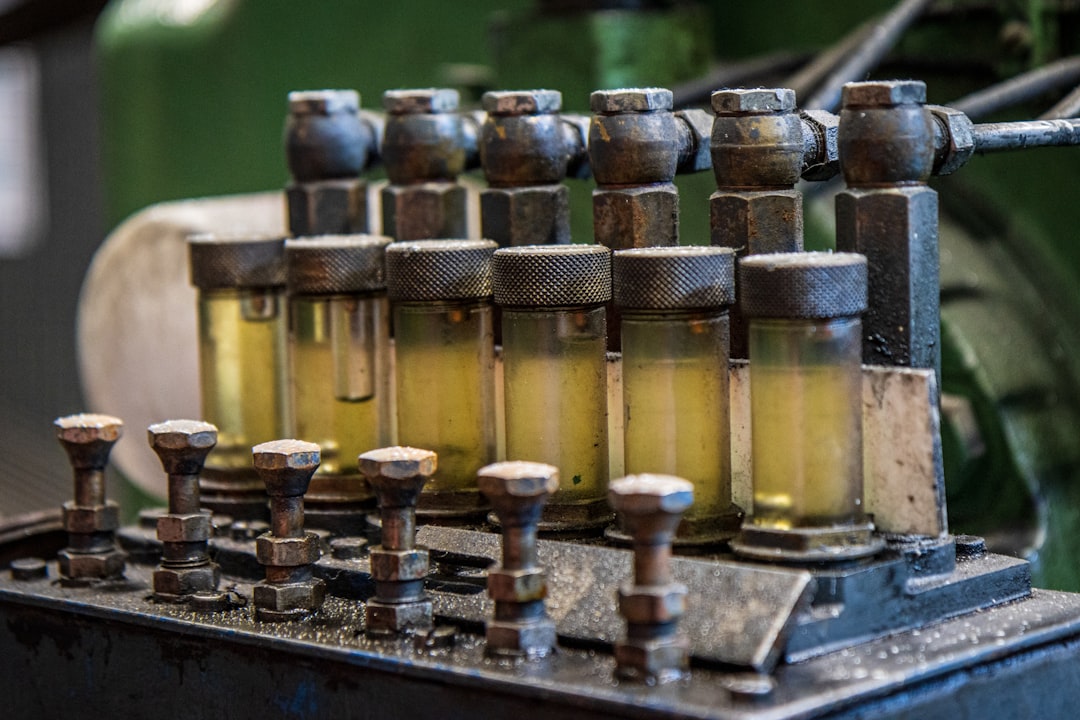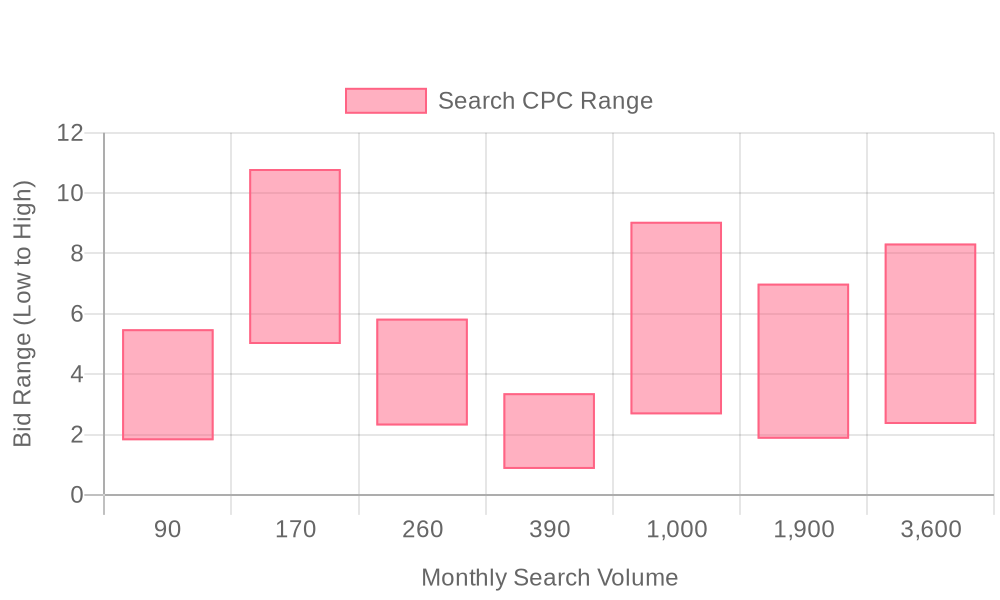
Supercharge your lead generation with a FREE Google Ads audit - no strings attached! See how you can generate more and higher quality leads
Get My Free Google Ads AuditFree consultation

No commitment
Supercharge your lead generation with a FREE LinkedIn Ads audit - no strings attached! See how you can generate more and higher quality leads
Get My Free Google Ads AuditFree consultation

No commitment
Supercharge your lead generation with a FREE Meta Ads audit - no strings attached! See how you can generate more and higher quality leads
Get My Free Google Ads AuditGet My Free LinkedIn Ads AuditGet My Free Meta Ads AuditFree consultation

No commitment
Supercharge your lead generation with a FREE Google Ads audit - no strings attached! See how you can generate more and higher quality leads
Get My Free Google Ads AuditFree consultation

No commitment
Navigating the intricacies of Google Ads for machinery repair can pose significant challenges for businesses aiming to generate quality leads and achieve a high return on investment. Many companies struggle with issues like missing high-value prospects or delayed follow-ups, which significantly impact their ability to convert interest into sales. By capturing potential customers when they actively search for repair services, Google Ads connects you directly with high-intent prospects. This guide will explore how applying effective advertising strategies specifically tailored for machinery repair services can enhance visibility and drive business growth. Leveraging the latest technologies allows businesses to better track engagement and optimize ad spend. Unlock the potential of precision targeting and online marketing to enhance your repair business through well-structured Google Ads campaigns.

Integrating Google Ads into a machinery repair marketing strategy delivers measurable lead growth through real-time visibility into buyer intent and campaign performance. When data from paid search is unified with engagement insights, repair businesses can focus budget and resources on the highest-value opportunities, while case studies like this Google Ads portfolio for heavy equipment repair help evaluate PPC effectiveness in industrial services.
A data-driven approach to Google Ads for Machinery Repair ensures every ad dollar is traceable and optimized for outcome, not just clicks. By consolidating audience, intent, and conversion data, marketers can pinpoint which campaigns drive inbound requests and service appointments from qualified prospects. Explore more insights on marketing analytics and attribution to enhance your strategy.
To see actionable results and start capturing more machinery repair leads, get started for free with Sona.

Machinery repair businesses operate in a high-value, time-sensitive market where every interaction with a potential customer counts. Google Ads connects these businesses to specialized audiences who are actively searching for immediate repair solutions, ensuring that marketing dollars reach those with pressing needs. For examples of successful campaigns and to evaluate PPC effectiveness in industrial services, review this Google Ads portfolio for heavy equipment repair.
Ready to see how advanced targeting and closed-loop analytics can drive more pipeline for your machinery repair business? Get started for free with Sona.

Machinery repair businesses require digital strategies that cut through noise and target buyers with urgent, high-value needs. Selecting the right Google Ads campaign type ensures every marketing dollar builds visibility, trust, and rapid lead generation. For a deeper dive on maximizing ad effectiveness in this sector, explore the Google Ads campaign portfolio for heavy equipment repair businesses.
Ready to put these strategies to work? Get started for free with Sona.

Growth in the machinery repair sector relies on identifying and acting on overlooked demand signals. Disconnected intent signals—such as fragmented website visits, missed ad clicks, and partial lead data—often result in wasted spend and lower conversion rates. When marketing and sales teams integrate solutions that track and segment these signals, they keep messaging relevant and timely, increasing the likelihood of qualified engagement throughout the buyer’s journey. Platforms like Sona Identification reveal which companies and people are visiting your website—even if they don't fill out a form—empowering B2B teams to prioritize outreach and accelerate pipeline generation.
Effective campaign execution in machinery repair advertising depends on a unified approach to data, intent segmentation, and precise audience targeting. Each growth opportunity becomes more actionable when powered by platforms that connect CRM, ad, and web analytics, enabling teams to accelerate demand generation and improve Google Ads optimization for repair services. To streamline your growth initiatives, get started for free with Sona.

Audience segmentation is critical for machinery repair businesses aiming to maximize the impact of their Google Ads investments. By aligning customer journey mapping with granular audience insights, marketers can prioritize high-value leads and deliver messaging that resonates at each stage of the buying process. For additional insights, explore our marketing analytics blog to discover proven segmentation strategies.
This structured approach to audience segmentation empowers machinery repair businesses to deliver targeted, personalized, and cost-effective advertising while ensuring every marketing dollar is accountable and optimized. For deeper strategies on Google Ads targeting for mechanics, aligning segmentation with intent signals and CRM data can drive significant improvements in campaign performance. If you’re ready to implement these tactics, get started for free with Sona to supercharge your audience segmentation and lead generation.

| Industry | Keyword | Monthly Search Volume | Competition Level | Low Bid | High Bid |
| Machinery Repair | on site heavy equipment repair near me | 90 | LOW | 1.81 | 5.49 |
| Machinery Repair | hw machine repair | 170 | LOW | 5 | 10.8 |
| Machinery Repair | cnc machine repair | 260 | LOW | 2.3 | 5.84 |
| Machinery Repair | snow removal equipment for sale | 390 | HIGH | 0.86 | 3.37 |
| Machinery Repair | machinery repair | 1000 | LOW | 2.67 | 9.05 |
| Machinery Repair | heavy equipment repair near me | 1900 | LOW | 1.86 | 7 |
| Machinery Repair | heavy equipment repair | 3600 | LOW | 2.35 | 8.33 |
Effective keyword strategy is the foundation for high-performing Google Ads campaigns in machinery repair. Targeting precise terms ensures visibility among decision-makers who are actively searching for solutions, increasing the probability of qualified inbound leads. For marketers seeking actionable guidance, explore this Google Ads best practices for manufacturing resource, and access additional insights from the Sona blog.
With a unified keyword approach, marketers can close the loop on incomplete ROI reporting by capturing both online and offline conversion data. When integrated with advanced Sona Identification and real-time intent data, every targeted term not only drives direct engagement but also feeds actionable intelligence into broader go-to-market strategies. This dynamic, feedback-driven process allows teams to refine bids and messaging in real time, ensuring that ad dollars continually reach the highest-converting, in-market prospects. To maximize your results, get started for free with Sona.
Precision-focused marketing is essential for machinery repair businesses to acquire qualified leads and maximize advertising budgets. Leveraging accurate data and unified insights elevates every stage of the campaign, transforming generic outreach into targeted, profitable engagement. Learn more about campaign analytics and best practices in our blog for industrial marketers.
Effective campaign execution in machinery repair hinges on clear segmentation, relevant messaging, and performance-driven optimization. Integrating real-time audience and conversion data supports dynamic, scalable strategies that adapt to shifting market needs and customer intent.
Modern platforms enable marketers to identify not only which keywords drive the most qualified traffic but also which companies and people are visiting your website, even if they don’t fill out a form. For examples of successful Google Ads performance in this industry, see this heavy equipment repair Google Ads portfolio.
Optimizing ad messaging based on real-time behavioral signals allows marketers to fine-tune headlines and descriptions for different audience segments. As audience data updates dynamically, campaigns reflect current intent, showcasing the right value propositions to each prospect at the perfect moment.
Unified analytics platforms support deeper attribution by connecting online ad clicks with offline sales or service calls. Marketers can explore offline attribution best practices to refine landing page experiences based on which touchpoints drive the highest-value conversions.
Audience lists can be continuously refreshed as prospects move through the funnel, allowing for more effective retargeting and lookalike audience building. For a detailed framework on maximizing PPC impact, explore this guide on Google Ads for manufacturing companies.
For teams ready to put these tactics into action, get started for free with Sona and unlock powerful B2B campaign optimization tools.
Machinery repair companies operating in competitive local and regional markets benefit from a unified approach to digital marketing. By connecting intent signals across channels, businesses maximize the impact of every marketing touchpoint and convert high-value prospects with greater efficiency.
Disconnected data and fragmented follow-up processes create missed opportunities. Integrating online and offline intent through platforms like Google Ads enables more cohesive targeting, smarter retargeting, and immediate response to in-market buyers. For an in-depth look at effective PPC strategies in the industry, see this heavy equipment repair Google Ads campaign portfolio. This approach drives real-world engagement and measurable business outcomes.
A strategic, data-driven approach to Google Ads for machinery repair elevates every aspect of your digital presence. By continuously syncing enriched audience profiles, tracking online and offline conversions, and using real-time intent signals, you ensure budget is allocated to the highest-converting prospects. This not only streamlines lead generation for machinery repair but also secures a stronger, more consistent return on investment. To see how you can transform your marketing with advanced tools, get started for free with Sona.
In the ever-evolving landscape of digital advertising, harnessing the power of Google Ads for your machinery repair business can be a game-changer. By strategically setting up, optimizing, and managing your campaigns, you can effectively attract more customers and elevate your business visibility.
Throughout this article, we've delved into the intricacies of crafting successful Google Ads strategies tailored to the unique needs of machinery repair services. From pinpointing the right keywords to optimizing ad performance and leveraging data-driven insights, these steps are crucial in overcoming the common challenges faced by businesses in this niche.
As you embark on this journey, remember that the key to success lies in your ability to adapt and innovate. Embrace these strategies, and you'll not only enhance your marketing efforts but also transform your business into a more visible and competitive force in the industry.
To take your advertising strategy to the next level, start for free and experience our platform's capabilities today.
Best practices include utilizing targeted keyword and audience strategies, aligning landing page content for optimal conversion, and employing data-driven approaches to track engagement and optimize ad spend.
Optimize your campaigns by employing continuous A/B testing, conversion path analysis, and multi-touch attribution to identify which ads and keywords generate the most qualified inquiries.
Target keywords reflecting urgent repair needs such as 'emergency machinery repair' and 'industrial equipment repair near me,' along with niche and brand-specific terms like 'CNC lathe repair' and 'hydraulic press maintenance.'
Budget considerations should focus on optimizing spend by targeting high-intent, high-value opportunities and using real-time data to shift budget towards campaigns driving the most qualified prospects.
Avoid common mistakes such as neglecting to align ad copy and landing pages, failing to employ data-driven optimizations, and not excluding irrelevant searches with negative keywords.
Join results-focused teams combining Sona Platform automation with advanced Google Ads strategies to scale lead generation

Connect your existing CRM

Free Account Enrichment

No setup fees
No commitment required

Free consultation

Get a custom Google Ads roadmap for your business
Join results-focused teams combining Sona Platform automation with advanced Meta Ads strategies to scale lead generation

Connect your existing CRM

Free Account Enrichment

No setup fees
No commitment required

Free consultation

Get a custom Google Ads roadmap for your business
Join results-focused teams combining Sona Platform automation with advanced LinkedIn Ads strategies to scale lead generation

Connect your existing CRM

Free Account Enrichment

No setup fees
No commitment required

Free consultation

Get a custom Google Ads roadmap for your business
Join results-focused teams using Sona Platform automation to activate unified sales and marketing data, maximize ROI on marketing investments, and drive measurable growth

Connect your existing CRM

Free Account Enrichment

No setup fees
No commitment required

Free consultation

Get a custom Google Ads roadmap for your business
Over 500+ auto detailing businesses trust our platform to grow their revenue
Join results-focused teams using Sona Platform automation to activate unified sales and marketing data, maximize ROI on marketing investments, and drive measurable growth

Connect your existing CRM

Free Account Enrichment

No setup fees
No commitment required

Free consultation

Get a custom Google Ads roadmap for your business
Over 500+ auto detailing businesses trust our platform to grow their revenue
Join results-focused teams using Sona Platform automation to activate unified sales and marketing data, maximize ROI on marketing investments, and drive measurable growth

Connect your existing CRM

Free Account Enrichment

No setup fees
No commitment required

Free consultation

Get a custom Google Ads roadmap for your business
Over 500+ auto detailing businesses trust our platform to grow their revenue
Our team of experts can implement your Google Ads campaigns, then show you how Sona helps you manage exceptional campaign performance and sales.
Schedule your FREE 15-minute strategy sessionOur team of experts can implement your Meta Ads campaigns, then show you how Sona helps you manage exceptional campaign performance and sales.
Schedule your FREE 15-minute strategy sessionOur team of experts can implement your LinkedIn Ads campaigns, then show you how Sona helps you manage exceptional campaign performance and sales.
Schedule your FREE 15-minute strategy sessionOur team of experts can help improve your demand generation strategy, and can show you how advanced attribution and data activation can help you realize more opportunities and improve sales performance.
Schedule your FREE 30-minute strategy sessionOur team of experts can help improve your demand generation strategy, and can show you how advanced attribution and data activation can help you realize more opportunities and improve sales performance.
Schedule your FREE 30-minute strategy sessionOur team of experts can help improve your demand generation strategy, and can show you how advanced attribution and data activation can help you realize more opportunities and improve sales performance.
Schedule your FREE 30-minute strategy sessionOur team of experts can help improve your demand generation strategy, and can show you how advanced attribution and data activation can help you realize more opportunities and improve sales performance.
Schedule your FREE 30-minute strategy session





Launch campaigns that generate qualified leads in 30 days or less.
